On October 11, we made our way to LAX for the 10-hour flight to Dublin. We had the longest walk ever to the gate (easily 20+ minutes in that weird side section of Tom Bradley) and when we finally boarded the plane, we found out our seats were broken and we were downgraded. With only one non-stop flight a day, we had to be on this flight-- no waiting until tomorrow. Otherwise, our entire schedule would be screwed up. The flight attendants were nice and made it as comfortable as possible, but it's safe to say it was the longest 10 hours with very little sleep. On the bright side? We arrived in Dublin safely, and on time.
 |
| Our hotel in Dublin, where we ate fish and chips! |
Arriving the following day with the time difference, we met our driver in the arrivals hall and proceeded to drive 20 minutes to our hotel. By the time we arrived, we only had time for a late lunch/early dinner of fish and chips, a short walk around, and lots of sleep to be awake for our full day of touring the next day! When in Dublin, a visit to Guinness Storehouse is a must. I had found a Big Bus Hop-on Hop-off tour that included fast-track tickets to Guinness Storehouse, and that's exactly what we did! The first bus stop was a 15-minute walk from our hotel. We boarded the bus at 10 AM and first stayed on the bus for the entire loop, listening to the commentary along the way. We passed by beautiful ivy-covered buildings and major points of interest across the city including museums, churches, and shopping streets. Twenty-two stops in total, this loop took approximately 90 minutes from beginning to end.
 |
| Driving around Dublin. |
When we arrived back at the first stop, we had to change buses to the one departing next, and we stayed on until the stop at Guinness Storehouse. A converted grain storehouse is the only part of the brewery that is open to the public, but it is massive... seven stories in total! Across the seven floors, you learn literally everything about Guinness before arriving at the top floor where the Gravity Bar awaits.
 |
| Inside Guinness. |
The history of Guinness is fascinating, and complex. Arthur Guinness was born in 1725. His father, Richard Guinness, was land steward for the Rev. Dr. Arthur Price, Archbishop of Cashel. The supervision of the brewing of beer for workers on the estate is likely where Arthur was introduced to the art of brewing, as the supervision was part of his father's duties. Arthur established a small, local brewery with his brother in Leixlip, but set his sights on the capital city of Dublin four years later (eventually signing a lease for a former brewery at St. James's Gate). Here, he honed his craft and began building the global brand that Guinness is today. The first known export of Guinness porter (very dark beer) left Dublin in 1796, and was so successful that he stopped brewing ale and focused solely on porter. West India Porter was first brewed in 1801 and was designed to withstand long sea voyages with a higher hop and alcohol content. This brew demonstrated Arthur's commitment to creating different variants for different markets. By 1880, St. James's Gate was the largest brewery in the world.
Guinness is now known for its clever, funny, and innovative advertising but for 170 years, Guinness never advertised. The agency S.H. Benson represented Guinness for 40 years and employed the artist John Gilroy, the mastermind behind the most recognizable Guinness adverts. Gilroy ran campaigns with iconic slogans and posters featuring a distraught zookeeper and his mischievous animals from the Guinness toucan to the stout-drinking ostrich, which carried the slogan My Goodness, My Guinness. Of course, Guinness was quick to innovate with the first television advert appearing in 1955... airing on the first night of commercial television. Today, Guinness strives to represent diversity with their advertising and continues to carry on the tradition that started in 1929, producing innovated artwork to match the quality of the beer.
Below are some photos from the Guinness Storehouse...
... And of course, we had a Guinness porter and an ale at the seventh floor Gravity Bar, even though it was standing room only!
 |
| Cheers! |
 |
| View from the top floor. |
After spending several hours at Guinness (and going crazy in the massive gift shop!) we had a very late lunch at Zampas, a Peruvian restaurant in the Hard Rock Hotel. We had delicious 12-hour cooked Irish beef tacos with pickled jalapeño, guacamole, pico de gallo, and feta to start. We also had a grilled corn on the cobb with smoked cheddar and paprika served with aji verde, and a juicy Nikkei peri-peri glazed chicken.
 |
| Our meal at Zampas. |
For dessert, we went around the corner to Queen of Tarts and picked up a carrot cake.
 |
| Walking towards Queen of Tarts. |
By now, we were full and exhausted. We walked 20 minutes back to the hotel and packed for our flight the following day. On October 14, we flew from Dublin to Prague. Apparently, the Prague airport has some fun photo opportunities!
 |
| Mom was excited! |
A car picked us up at the airport and drove us to our hotel 30-minutes away, where we opted to order room service because it was already 9 PM. We carb-loaded with pizza and pasta, sharing a dessert with caramel ice cream.
 |
| Honey cake with caramel ice cream. |
The following day, we set off on an all day adventure throughout Prague... by car (which turned out to be the best investment of the entire trip because we probably saw one week's worth of Prague in a single day). We started off by driving to Dancing House, which is probably the weirdest architecture you can find in Prague. Built in 1996 by architects Vlado Milunić and Frank Gehry, the curved lines of the narrow-waisted glass building clutching against its more upright and formal partner led to it being christened the "Fred & Ginger" building (after legendary dancing duo Fred Astaire and Ginger Rogers). At the top of the tower, there is a dome with the construction of metal tubes coated with stainless steel mesh-work. The dome is shrouded in imaginary hair. This project was, and is, highly controversial in modern-day Prague, but tourists love it!
 |
| Outside the Dancing House. |
 |
| By the river near Dancing House. |
 |
| River views. |
After a few photos and a walk on the adjacent bridge to view the river, we made our way back to Old Town to visit Havelský Market, the only preserved market in Old Town dating back to 1232. It offers a selection of fresh fruits and vegetables, however mainly tourists frequent this market.
 |
| I loved how they stacked the fresh berries! |
From there, we visited Old Town Square ('Staromestske Namesti'). The most important square of historical Prague, it was founded in the 12th century when it became an important marketplace for the city (and eventually the most important marketplace in the country often called the Big Square). In the middle of the square are memorial stones marking the execution of 27 Czech lords in 1621, and the Prague meridian. Over the centuries, many historical buildings grew around the square and today you can see examples of many architectural styles including Romanesque, Baroque, and Gothic.
Old Town Hall is probably the most visited landmark-- It was founded in 1338 and is a hotch-potch of medieval buildings presided over by a tall, Gothic tower with the world-famous Astronomical Clock.
Although the clock's 45-second performance is underwhelming, it is one of Europe's best-known tourist attractions and gathers a large crowd every hour. After ducking into a crystal shop (Prague is known for its hand carved, hand painted crystal), we made our way across the river to visit the John Lennon Wall (which John Lennon never actually visited).
 |
| We ended up buying these hand painted crystal tea cups, which will remain purely decorative! |
 |
| Driving around Prague on the way to the John Lennon Wall. |
After John Lennon's murder on December 8 1980, John Lennon became a pacifist hero for many young Czechs. An image of Lennon was painted on a wall in a secluded square opposite the French Embassy along with political graffiti and Beatles lyrics. However, the secret police wanted the wall to be whitewashed. They never managed to keep it clean for long, and the John Lennon Wall became a political focus for Prague youth as most Western pop music was banned by the communists and some Czech musicians were jailed for even playing it. The wall is still used as a political statement to this day, which is evident by the addition of pro-Ukrainian support. Some photos below!
Before leaving the secluded square, we went on a bridge to look out over the "Little Venice" canal, which looks like Venice, Italy.
We then went to Strahov Monastery to visit the outside and see the best panoramic views of the city.
We proceeded to visit Prague Castle, where we first had a traditional Czech lunch of beef shank in a red wine sauce and mashed potatoes.
According to the Guinness Book of Records, Prague Castle is the largest ancient castle in the world. It could easily take one entire day just to see it all!
We went inside the stunning St. Vitus Cathedral, which was built over a time span of 600 years. It's one of the most richly endowed cathedrals in central Europe and has the most stunning art nouveau stained class by Alfons Mucha.
 |
| St. Vitus from the outside. |
 |
| St. Vitus from a different angle. |
 |
The inside of St. Vitus.
|
After exploring the grounds for an hour, we walked around Wallenstein Gardens and the weird Dripstone Wall. Constructed between 1623 and 1630, the Wallenstein Palace was a private residence for various generations of the Wallenstein family. At the end of World War II, the land fell into the hands of the state government who repurposed the palace's main buildings to serve as the seat of operate for the Senate of Czechia.
The Wallenstein Palace's massive network of geometric gardens remain the biggest draw for the public. Fashioned in an early Baroque style, the grounds were separated into several distinct areas, the most secluded of which was known as "The Grotto". Here, visitors are struck by the Dripstone Wall which is created by things that, from a distance, seem to be dripping skulls. When you get closer, you realize that the wall is made from uncanny assemblage of stalactite-like rocks. Signs along the wall note that, if you stare hard enough, you can make out human and animal faces peering out from within the wall's recesses. Creepy much?
We drove by Charles Bridge, where we briefly got out of the car. The stay was short lived, however, because it was packed with tourists... shoulder-to-shoulder!
 |
| River views from Charles Bridge. |
 |
| Too crowded for me!! |
We made a few stops at pretty viewpoints as well.
.jpg) |
| Panoramic Prague. |
Our last stop, after driving around some neighborhoods outside the city, was to Donuterie, a cute donut shop near Old Town. We got a caramel donut, rose donut, and raspberry on white chocolate.
After returning to the hotel, we walked a short distance to a Japanese restaurant for dinner, as it has become our tradition to find Japanese food all over the world.
The following day, we left Prague and flew to Riga. German Bishop Albert von Buxhoevden founded Riga in 1201 as a bridgehead for the crusade against the northern "heathens"-- the Balts, the Slavs, and Finno-Ugric people. Riga became a stronghold for the Knights of the Sword and the newest trading junction between proto-Russia and the West. When Sweden took over the city in 1621, it grew into the largest holding of the Swedish Empire (larger than Stockholm). The Russians then took over, adding an industrial element and by the mid-1860s, Riga was the world's biggest timber port and Russia's third city after Moscow and St. Petersburg. Cafes, salons, and dance clubs flourished when the country became independent in 1918, but all of that ended with the Soviet occupation in 1940. World War II left the city bombed and without the two largest communities, Germans and Jews, but even as part of the USSR, Riga remained known for its forward thinking and cultural life. Today, Riga is a bustling city and is one of the cornerstones of the Baltics.
 |
| Flying into Riga, Latvia. |
We were met on arrival and driven 20 minutes to our hotel in the heart of Old Town. When we checked in to our hotel, we were immediately creeped out. Latvia is a small country and many of the "nice" hotels were not walking distance to what we wanted to see. I read a few blog articles online about where to stay, and I eventually settled on this hotel but nothing prepared us for the reality. It was dark, with the smallest check in area, and the kitchen was apparently broken so we wouldn't be getting breakfast (they did refund us for the cost of breakfast daily, as they should). When we tried to take the elevator up to the room, the elevator wouldn't budge. We kept telling the guy it wasn't working and he kept telling us to wait. It turns out there was just a very big delay... like 1-2 minutes delay from the time you pushed the button to the time the doors actually closed and then another delay before the elevator started moving. Then we got to the room... No heat, the lowest beds ever, and pretty much nothing in it. The receptionist did bring us a space heater, which did the trick, but it was just a weird place to stay. All that said, however, it was the perfect place to stay because of the location. And for us, the location was everything.
 |
| St. Peter's Church, around the corner from our hotel. |
Before we left the US, I was able to secure a reservation at Domini Canes for us. It has since become one of my top five restaurants anywhere in the world. The restaurant is small (maybe 10 tables max) and was decorated for the holidays. The food was beautifully presented and SO tasty. We shared butter-fried sea scallops with pea purée; Green salad with with goat cheese, red wine–braised beets, nuts and berries with a basil and cherry dressing (not pictured); Oven baked Latvian pork ribs with sweet potato purée, Pan-fried pikeperch fillet with green-pea purée and mango pistachio tartare; and Crème brûlée. What. A. Meal! Photos below, because it was almost too pretty to eat.
 |
| Butter fried sea scallops with pea purée. |
 |
| Pan-fried pike perch with green pea purée and mango pistachio tartare. |
 |
| Oven baked Latvian pork ribs with sweet potato purée. |
 |
| Crème brûlée. |
The next day, we started walking to a cafe that was recommended to us by the waiter at Domini Canes, but when I spotted a bagel shop we popped in there instead... and we did not regret the decision! Freshly made bagels, fresh juice, good coffee... Big Bad Bagel is my favorite breakfast spot anywhere in the world. I had the most delicious sesame bagel with brie, arugula, onion jam, and balsamic vinegar (that I now recreate at home because I crave it) and my mom had a classic: cream cheese on a toasted sesame bagel. Combined with my Latvian juice (a mixture of orange, apple, and carrot), this was the best breakfast ever... and so simple!
 |
| I loved their logo of a wolf eating a bagel! |
Following breakfast, we went on our own walking tour of Riga. Since our hotel was so centrally located, most of the historical buildings were within walking distance.
 |
| Walking around Riga. |
 |
| Walking around Riga. |
We began walking towards the Three Brothers, one of the most famous landmarks in Riga ("related" to Tallinn's Three Sisters). Riga dubbed three of its old stone houses the Three Brothers, conveniently lined up in a photographic row. No. 17 is over 600 years old, making it the oldest dwelling in town. No. 19 is a 17th century house where the Latvian Museum of Architecture is located.
 |
| Latvia's Three Brothers. |
Prior to leaving the US, I had read a blog that mentioned a sightseeing tram so when we happened upon it, we happily paid the 10 euro ticket cost.
 |
| The tram was parked outside the church. |
 |
| We were the only ones on the tram! |
 |
| Walking to the tram, we passed by this fun UNESCO plaque. |
The one-hour tram ride took us all around Riga, with commentary provided through headphones that we plugged into our seat. Because it was low season, and because Riga is still very much a hidden gem, we were the only ones on the tram! This was different than a hop-on-hop-off because you could not get off the tram until arriving back at the starting point. After the ride, we walked back to some of the sights so I could take photographs. Some of my favorite photos below.
We ended at the Blackheads House, once known for its wild parties. This gorgeous building, built in 1344, was once a clubhouse for the Blackheads guild of unmarried German merchants. Even though the original house was bombed in 1941 and flattened by the Soviets seven years later, somehow the original blueprints survived and an exact replica was completed in 2001 to commemorate Riga's 800th birthday.
After our morning out, we returned to our hotel to warm up before going out again. This time, we made our way to Saint Peter's church.
 |
| Walking to Saint Peter's church. |
The steeple easily has the best view in all of Riga. This Gothic church is thought to be around 800 years old, making it one of the oldest medieval buildings in the Baltics.
 |
| The outside of the church. |
 |
| Details of the church. |
The red-brick interior is relatively unadorned, except for heraldic shields mounted on every column and art exhibits on either side of the aisles.
 |
| Stained glass windows inside the church. |
The church's Gothic look is softened by baroque sculptures which were added in the 17th century, along with the spire that was destroyed in a fire in 1721 (despite Russian emperor Peter I personally rushing to the scene to attempt to extinguish the blaze). A legend says that when the spire was re-erected in 1746, builders threw glass from the top to see how long the spire would last (a greater number of shards meant a very long life). The glass ended up landing on straw, and broke into just two pieces. The spire ended up being destroyed again in WWII and when it was rebuilt again, the same ceremonial glass chucking was repeated. Some photos from the top below!
Because Domini Canes was so delicious, we had made a reservation while still eating our meal the night before so we could dine there one more time. When dinner time approached, we were the only ones in the entire place! At least for a little bit...
 |
| Domini Canes is where the black awning is. |
 |
| This photo is the entire restaurant, except for one booth by the window! |
 |
| They write your name on the table. I'll forgive them for spelling my name wrong, since it was so delicious! |
 |
| I loved the cozy decor of Domini Canes. |
With their extensive diversity of seasonal produce, I wanted to try everything. I think the waitress thought I was crazy with how much I ordered, but as we didn't eat lunch (we were still full from our bagels!) I was very hungry. We ordered: tomato soup with sweet onion (which was so different than tomato soup in the US!); the green salad with goat cheese, red wine-braised beets, nuts and berries, with basil cherry dressing; oven baked avocado filled with Camembert and onion marmalade; oven baked Camembert cheese with ligonberry jam and toasted bread; and dark lentils "Beluga" with Turkish peas, sun-dried tomatoes, curry-coconut milk, and goat cheese. Of course, we ordered the crème brûlée again! See below for photos, and try not to drool!!
 |
| Tomato soup with sweet onion. |
 |
| Green salad with goat cheese, red wine braised beets, nuts, and berries with a basil cherry dressing. |
 |
| Oven baked avocado filled with Camembert and onion marmalade. |
 |
| Oven baked Camembert cheese with ligonberry jam and toasted bread. |
 |
| Dark lentils "Beluga" with Turkish peas, sun-dried tomatoes, curry-coconut milk, and goat cheese. |
After our evening coffee at Domini Canes, we walked back to the Blackheads House to see it lit up at night before walking back to our hotel to prepare for our road transfer to Tallinn the next day.
 |
| Quick iPhone photo. |
I had booked a sightseeing transfer from Riga to Tallinn by private car as I figured we'd be tired of airports by this point in our trip (and thought it might be nice to drive, so we could see more). We first stopped in Sigulda, Latvia to visit Turaida Castle. Sigulda is the gateway to the Gauja Valley, boasting two castles, hiking trails, and other outdoor activities. Sigulda is also home to many legends, one especially sad one involving Maija Roze (May Rose)-- a little girl who was taken into Turaida Castle after she was found amongst the wounded following a battle in the early 1600s. She was courted by men far and wide, but her heart belonged to Viktor who was a gardener at nearby Sigulda Castle. They would meet in secret at Gutmana Cave, halfway between the two castles. One day, a soldier among her suitors lured her to the cave with a letter forged in Viktor's handwriting and when she arrived, he tried to kidnap her. She pleaded with the soldier and offered to give him the scarf from around her neck in return for her freedom, claiming it had protective powers. To prove it, she told him to swing at her with his sword. Whether she was bluffing or actually believed the scarf had magical powers, no one knows, but the solder took his swing and killed her.
Turaida means "God's Garden" in ancient Livonian, and the castle certainly looks magical (especially when viewed from the tower looking down). The red-brick castle was built in 1214 on the site of a Liv stronghold and the Turaida reserve features numerous buildings that have been transformed into small galleries and exhibits as well as May Roses's grave stone (now known as the "Rose of Turaida"). Until the end of the 16th century, it served as a residence of Archbishops of Riga who ruled the lands. Over the centuries, the castle had been rebuilt and improved several times until a fire damaged it in 1776. Afterward, it was no longer inhabited and gradually turned to ruins. The main tower of the Turaida stone castle rises over the forests of the ancient Gauja River valley. I climbed the 139 uneven brick steps, circling the tower around and around (because of course it was a spiral staircase...) with very little light to guide the way but the view from the top was well worth it. It was absolutely breathtaking with the autumn leaves and crisp autumn air. Photos below!
 |
View from the top.
|
 |
Sticking my camera out the peephole to look down...
|
 |
| Fall colors on the path to the visitor center on our way back to the car. |
From Turaida we continued on towards Pärnu, first stopping to take some photos at the border of Latvia and Estonia.
 |
| Saying goodbye to Latvia... |
 |
| And hello to Estonia! |
Once we arrived in Pärnu, the charm of Latvia vanished as we entered Estonia. It felt like an abandoned seaside town, though apparently in the summer it's Estonia's summer capital known for its spas, white sandy beaches, and parks. We ducked into a cafe to drink some coffee and grab a snack (we had taken some Big Bad Bagels with us for lunch, which we ate in the car) before continuing on to Tallinn.
 |
| Sweets in Pärnu. |
As we approached Tallinn eight hours later, we were met with a rush hour traffic jam. We must have been at one signal for over twenty minutes! If you thought Los Angeles was bad, think again... We finally arrived at our hotel after almost nine hours of driving. The next time I think it's a good idea to drive from one place another? I'll think again! After a quick room service dinner since we had no energy to go out, we went to sleep in anticipation of our walking sightseeing tour the next day.
Though Estonia shares a similar geography and history with Latvia and Lithuania, it is culturally very different. Its closest ethnic and linguistic buddy is Finland though 50 years of Soviet rule separated the two. Nevertheless, our Latvian guide can't understand Estonians when they speak because the languages are so different, and vice versa. For the past 300 years, Estonia has been linked to Russia but the two states don't have much, if anything, in common. Since regaining independence in 1991, this little republic has crept from under the Soviet blanket and leapt into the arms of Europe, transforming its environment completely. "Eesti", as its known locally, is a sparsely populated territory that spills out into the Baltic in the form of over 2,000 islands. Over half the country is compromised of forests while the islands harbor medieval churches and their own distinct cultures.
When we woke up and met our guide outside the hotel, we were greeted by snow flurries. Lots and lots of snow flurries. We began our tour by walking through St. Catherine's Passage, directly opposite from our hotel.
 |
| St. Catherine's Passage. |
 |
| The monastery. |
Formerly known as Monk's Alley, this passage winds its way from Vene Street past the southern end of the Dominican monastery to Müürivache Street. St. Catherine's church, which lent the alley its name, is perhaps Tallinn's oldest building. It was founded by Dominican monks in 1246 and it had its own brewery and hospital. A mob of angry Lutherans torched the place in 1524 and the monastery languished for the next 400 years until the partial restoration of 1954. The alley as a whole was last restored in 1995, and numerous handicraft workshops can be found there today. Once we reached the city wall, we were at the Hellemann Tower and Town Wall Walkway.
 |
| These added support beams help keep the wall up today. |
To the right, we approached Viru Gate and the 24 hour flower market. Near Town Hall is a junction of three streets: the Vana turu kael (Old Market Place). King Street leading to Toompea, Russian Street leading to the port, and Viru street leading to the town gates all start at the junction, the latter of which ends at Viru Gate. Viru Gate was built in the mid-14th century but has been consistently rebuilt. The medieval gates of Tallinn were all well fortified, consisting of one or more foregates and the square main gate. In order to permit entry, a drawbridge was lowered over a moat filled with water. Medieval Tallinn had six gates, but today only two remain.
 |
| Viru Gate. Of course they HAD to put a McDonald's there... |
 |
| Entering the city from Viru Gate. |
We passed by St. Nicholas' Church as the snowfall started to increase. Dedicated to St. Nicholas, the patron saint of merchants and seafarers, the building was an active church until World War II. After the fire in 1944, the building was reconstructed and adjusted to the needs of a museum and a concert hall. In 1984, it was opened to the public as a branch of the Art Museum of Estonia.
 |
| St. Nicholas Church as the snow falls down. |
Continuing on, we stopped by the Town Hall. The Town Hall was a representative building of the medieval Tallinn, which housed the government of the town. According to the Lübeck town bylaws, Tallinn was a town governed by the council elected from members of the Great Guild. The Town Hall was built in 1322 and is still used as a representative building of the city government.
 |
| Town Hall of Tallinn. |
We walked around Town Hall Square, which became the center of Tallinn's downtown as early as the 13th century and houses several important buildings. The town council prison was built in the narrow street behind the Town Hall and is currently utilized as the Town Hall Museum. The Town Hall Pharmacy was first mentioned in 1422 and this medieval pharmacy was an important trading place for wine, textiles, paper, gunpowder, wax, spices, and sweets in addition to medicine. Today, it is still a working pharmacy as well as a museum. Cutting through a passage, we stopped at the Church of the Holy Ghost and Pink Street to see the guild houses. Pink Street (also called Long Street) is the longest street of the old town, leading from Toompea to the port. The former house of the Great Guild (now the Estonian History Museum) stands immediately opposite the Church of the Holy Ghost. The first records of the guild date back to 1325, but the building was completed in 1410. Only the most wealthy residents of the town could be admitted and had to be married to join. The house of the Brotherhood of the Black Heads is nearly the sole surviving Renaissance building in Tallinn. The Brotherhood was formed in 1399 and was an organization of unmarried merchants concentrating on protecting their interests and organization of social affairs.
Nearby, we stopped at the Reichmann House and the Draakon Gallery. These two buildings are well-preserved examples of Art Nouveau buildings in Estonia. There is an urban legend about the Reichmann House... In the house that stood in this place 300 years ago, there lived an old bachelor who had a frivolous habit of peeking through the windows of the house opposite, where three young girls lived. After hearing this city legend, architect Jacques Rosenbaum decorated the building with a bust of a gentleman looking across the street.
 |
| Wide angle featuring the Reichmann House on the right. |
 |
| iPhone shot of the man on the Reichmann House. |
 |
| Draakon Gallery. |
We continued on until we reached Fat Margaret, which used to be perched at the edge of the sea (the sea levels have changed, and it is now further away).
 |
| Walking towards Fat Margaret. |
 |
| iPhone shot of Fat Margaret. |
 |
| Another entrance to the city from Fat Margaret. |
From there, we visited the Three Sisters. These three medieval residential buildings date back to the 15th century. The Three Sisters are typical medieval merchants' homes, consisting of an entrance hall, a small chimney kitchen, the master's office and living/sleeping chambers, and store rooms above the living quarters. Beams used to hoist goods to the storerooms can still be seen at the top of the gables. While some reconstruction was made in the 19th century, the upper facades of all three buildings have remained unchanged. The oldest of the three is the largest one to the south, dating back to 1415.
 |
| Tallinn's Three Sisters. |
We walked through the Lower Old Town to reach the Upper Old Town where we saw the 3 monks of the Danish Garden, passing through the Taani Kuninganna Roosiaed to visit the Alexander Nevsky Cathedral. Photos below!
 |
| Alexander Nevsky Cathedral. Including this one, I've now been to two Alexander Nevsky Cathedrals in the world... The other was when I was in Sofia, Bulgaria! |
The construction of the cathedral took place during the rule of Russian Czars Alexander III and Nicholas II in the end of the 19th century under supervision of Prince Shakhovskoi, the governor of Estonia. We walked across the street to Toompea Castle and Tall Hermann stopping in the Governor's Garden. Along the way, we had some nice views of St. Mary's Cathedral before stopping at arguably the best view of the Lower Old Town at Patkuli viewing platform. From there, it was back to the hotel.
 |
| View of Tall Hermann. |
 |
| Governor's Garden. |
 |
| Alexander Nevsky Cathedral as seen from the Governor's Garden. |
After a bite to eat, we walked around Pink Street to do some shopping. Because it was still really cold and snowing (about 36 degrees, not including the wind chill), we ducked in and out of warm shops.
 |
| Watching the snow fall from a cafe. |
 |
| Tallinn's first snowfall of the year! |
A few hours later, we returned to our hotel and hung our jackets up to dry (since we were not expecting weather like this and didn't have the proper clothes!) The following day, we walked back towards Viru Gate for some more shopping, where we bought Estonian wool sweaters.
We continued up the main shopping street before returning to the cafe where we had lunch yesterday. This time, we were the only ones in there while we munched on a pastry and had some coffee. We enjoyed lunch in Town Hall Square (at the same restaurant since not many are open during low season) before returning to our hotel down the street. We tried to visit the Banned Books Museum, but unfortunately it was closed for a private event... Next time!
 |
| Town Hall Square. |
 |
| My favorite walkway in Old Town, and the café we went to on the right. |
 |
| Café goodies. |
Around dinner time, we headed to the airport for our flight to Lithuania. We got through security quickly (the airport in Tallinn is incredibly small), and sat and waited at the gate for hours. Our one-hour flight ended up being delayed so we didn't land in Vilnius until 10 PM.
 |
| Hello, Lithuania! |
By the time we met our driver and arrived at the hotel, the kitchen only had a small menu to choose from (we still had not eaten since lunch!) and by the time the food came, it turns out they had made us sandwiches instead, because the kitchen was out of food. At that point, we didn't care-- we ate quickly and slept.
According to a legend, the Grand Duke of Lithuania Gediminas went hunting from his capital in Trakai to the Neris and the Vilnia Valley. Chasing an aurochs, he lost his way and fell asleep in a sacred grove at the foot of the present Castle Hill. In his dream, he saw a huge wolf that howled like one hundred wolves. This prophetic dream was explained to him by the pagan priest Lizdeika, who told Gediminas that in this location, he should build a castle and found a city that would be unconquerable like an iron wolf. The howling of one hundred wolves signified the glory of the city-- it would resound in all countries of the world. Gediminas listened, and named his new capital-to-be after the Vilnia River... modern-day Vilnius. The southernmost of the Baltic states, Lithuania was Europe's last country to be Christianized. Vilnius, Lithuania's capital, was once nicknamed the "Jerusalem of the north" but its Jewish community was largely destroyed in World War II. Today, it's a compact, walkable city with a lively night scene.
We were picked up at 9 AM the following morning for our visit to Trakai castle. Spread along a peninsula not far from Vilnius, Trakai is a little town but the most popular day trip when in Vilnius. With practically the entire town a national park, it's fitting that Trakai's name derives from the Lithuanian word for a forest glade. Its castle roosts on one of 21 islands in Lake Galvė and it's thought that Grand Duke Gediminas made Trakai his capital in the 1320s. Once the capital was transferred to Vilnius, the castle remained a place of residence for grand dukes for a long time. Around 1350, the most famous Lithuanian ruler Vytautas was born here. In 1405, he gave the Castle of Old Trakai to Benedictine monks and, in the north-western corner of the castle square, the buildings of the Benedictine church and monastery still stand today. Walking through town, we were the only ones in sight.
 |
| Even though it was low season, this is technically a pedestrian only zone so we had to park far away and walk the rest of the way in the rain and wind. |
We made our way to the Island Castle, the only water castle in Eastern Europe. The complex of the fortress built in the 14th-15th century consists of the Ducal Palace surrounded by a defensive wall and a fore castle, separated from the palace by a deep moat. The castle is dominated by a five-story turret, whose ground floor is a gate to the courtyard of the Ducal Palace.
 |
| Title gals freezing their butts off! |
The entire first floor of the right wing is a reception hall but now (since 1962), the entire five-story complex has transformed into a history museum. The museum houses the most impressive collection of artifacts from coins and dining utensils to tapestries, clothes, weapons, and more. I could have spent all day in just one part of the castle and still not have seen everything! Below are some photos of the inside (note: you need a separate photography permit to photograph inside!)
 |
| The reception hall was my favorite room. |
 |
| Mosaics of the castle. |
 |
| Mosaic details. |
 |
| Some of the many paintings. |
 |
| The way the exhibits were displayed was incredibly unique. Here, they painted flames on the glass showcasing the weapons used in battles. |
 |
| There were at least 10 rooms like this one where the objects were displayed by color and/or shape. |
 |
| One of the cases of glass objects. |
 |
| Exiting the castle. |
After our tour of the castle, we quickly made our way back to the car. It was a cold day, and the wind was howling.
 |
| The pathway to/from the Island castle. |
We were very glad to be back in the warmth of the car! On the way back to Vilnius, our guide ended up driving us around the entire city to give us an idea of where we should walk to later. Once we were back at the hotel, we were so tired that we didn't go out again.
On our last day of the trip, we took a leisurely walk around the city. Compared to Latvia and Estonia, Lithuania was crowded. There were school groups everywhere! Some photos from our walk below.
 |
| Gates of Dawn. |
 |
| One of the fun window displays. |
After walking around, we headed in the direction our guide had advised yesterday to try to find one of the pizza restaurants he claimed was so good. We found it, and it was AS good as Italy! We toasted to our journey with a Vilniaus beer (which has since become our favorite beer) and finished our meal with some fresh coffee and gelato.
 |
| Lasagna, pizza, and beer! |
 |
| Our new favorite beer. |
The restaurant had hilarious signs on every utensil holder on all tables, so we had fun walking around before we left!
Stuffed, we walked back to our hotel in the pouring rain to try to get some sleep before we needed to leave. In the early hours of the morning, we made our way to the airport for the journey home... The panic trip was a huge success! Thanks for following along with our adventures in the Baltics. As always, follow my Instagram @elissatitle for photos and stay tuned for more!

















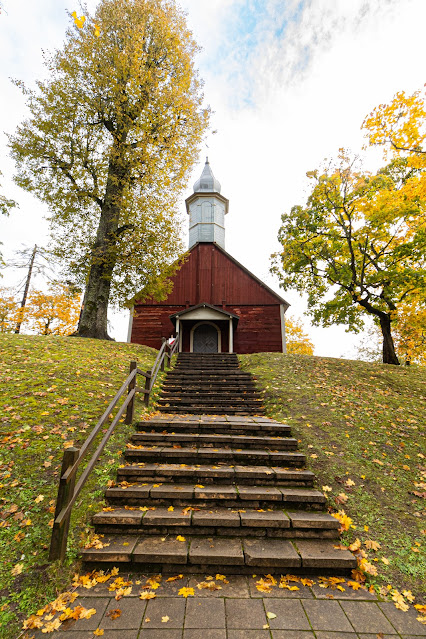
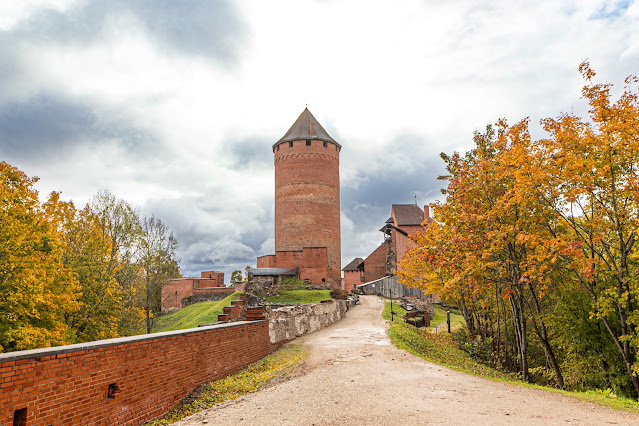









































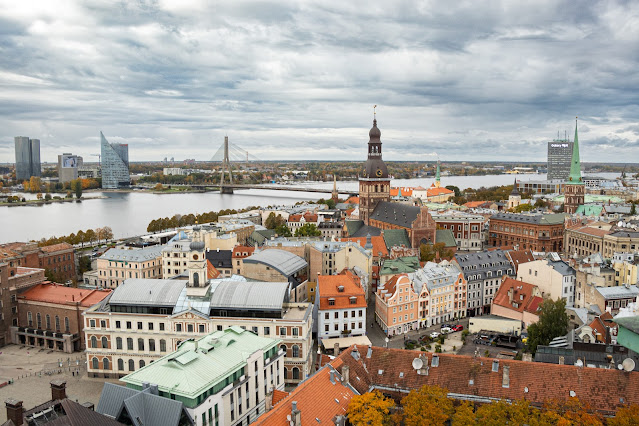








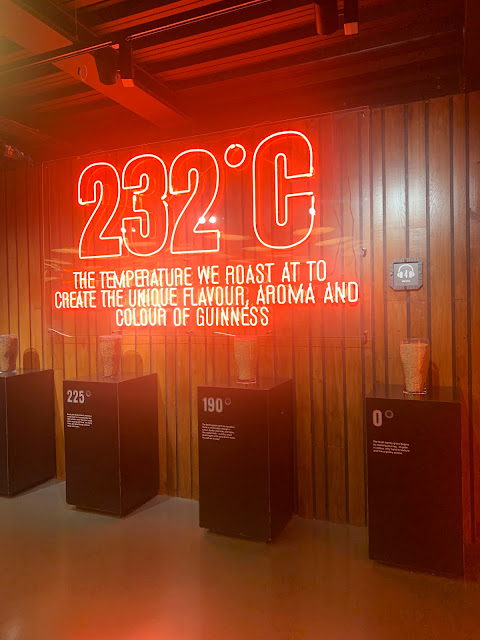









.jpg)





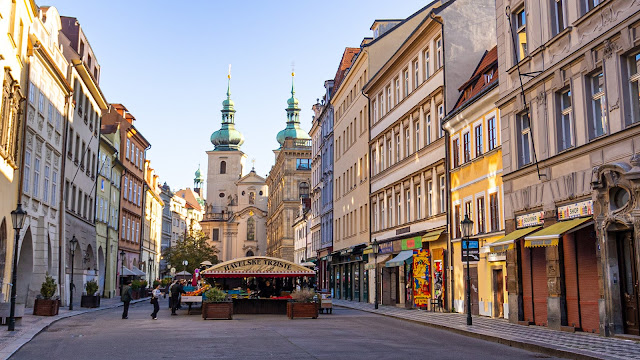



























.jpg)




















































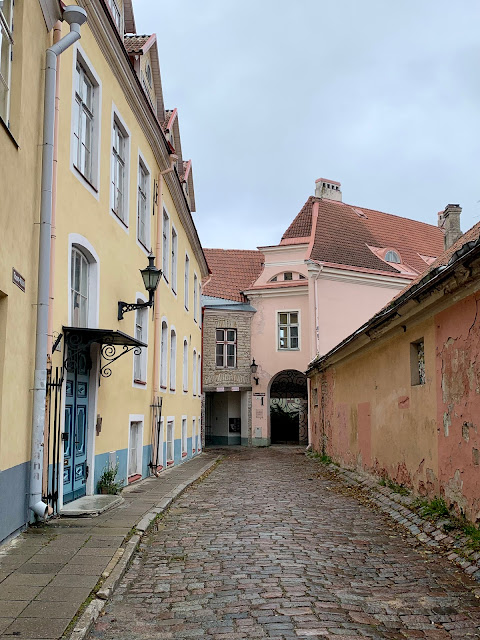
















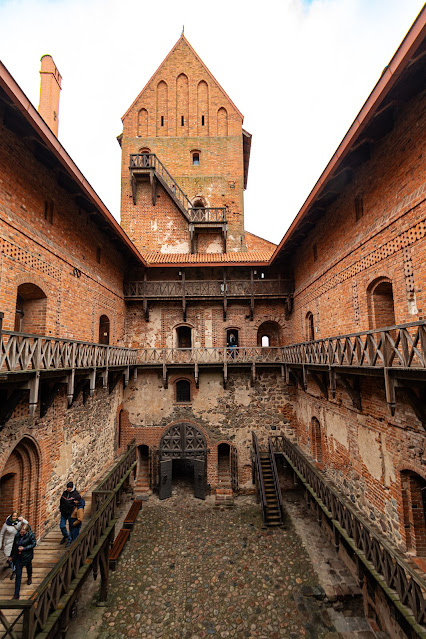














.jpg)

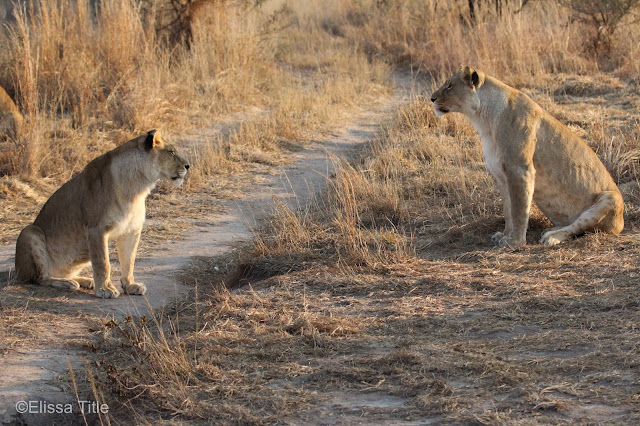





Comments
Post a Comment